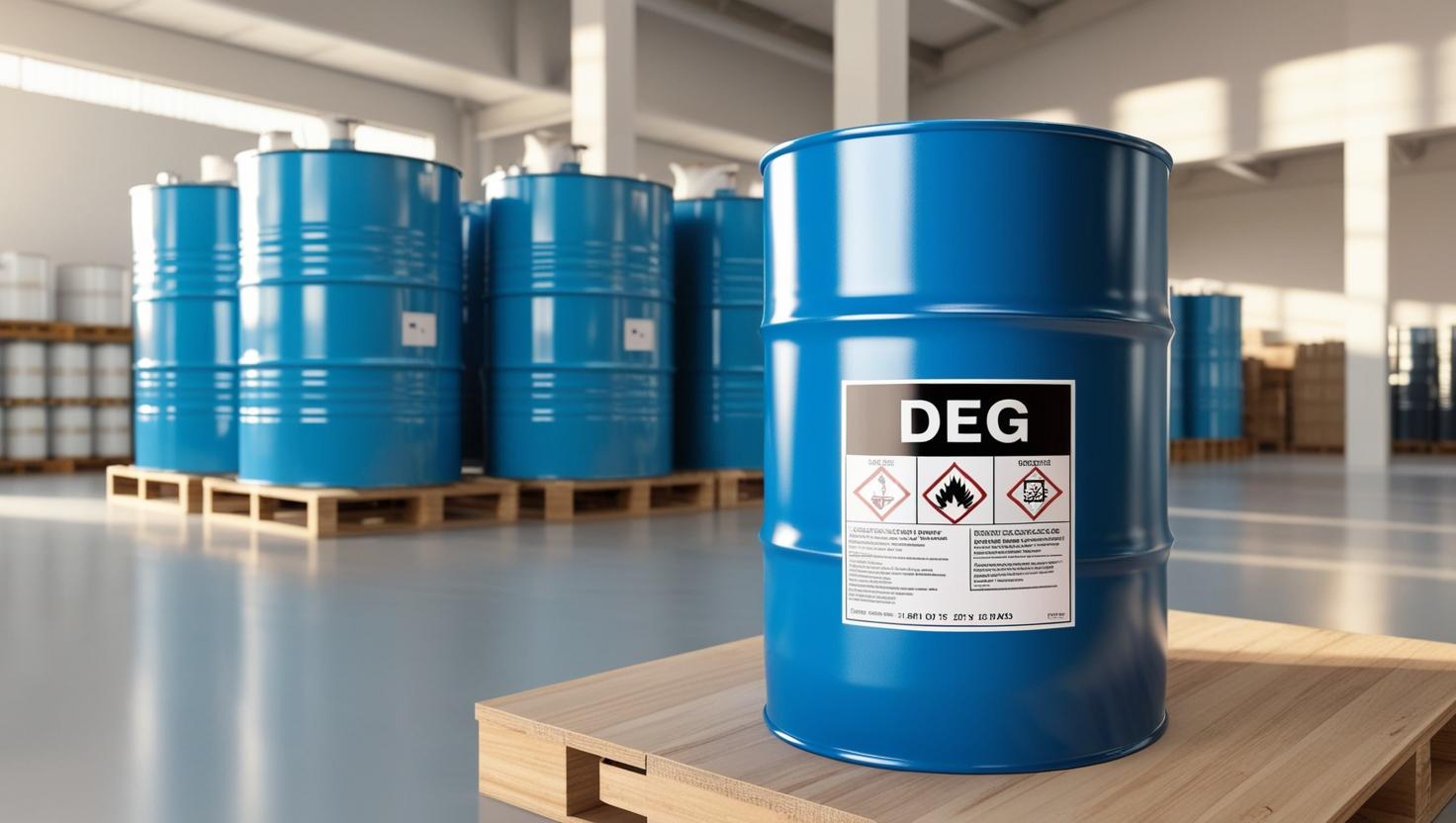
Diethylene glycol is a colorless, odorless liquid that plays a crucial role in various industries, including pharmaceuticals, cosmetics, and plastics. Its significance lies in its unique chemical properties that make it an effective solvent and moisture-retaining agent. Understanding these properties is essential for leveraging DEG's full potential across diverse applications.
2. Chemical Structure of Diethylene Glycol
Diethylene glycol has the molecular formula C4H10O3, consisting of two ethylene glycol units linked by an ether bond. This arrangement not only influences its physical and chemical characteristics but also differentiates it from other glycols such as monoethylene glycol and triethylene glycol. The specific atomic arrangement contributes to its lower volatility and higher boiling point compared to simpler glycols.
3. Physical Properties of Diethylene Glycol
Key physical properties of diethylene glycol include a boiling point of approximately 245 °C and a viscosity significantly higher than water. These properties are critical for its applications; for instance, its high viscosity makes it suitable for use in formulations requiring thickening agents. Additionally, temperature and pressure can alter these characteristics, affecting how DEG behaves in different environments.
As a solvent, diethylene glycol excels at dissolving a wide range of substances, making it invaluable in industrial processes and consumer products. It is commonly used in the formulation of paints, coatings, and inks due to its ability to dissolve both polar and nonpolar compounds effectively. Its solvent capabilities facilitate the blending of ingredients that might otherwise remain separate.
5. Moisture Retention Abilities
Diethylene glycol's hygroscopic nature allows it to retain moisture efficiently, which is particularly beneficial in skincare and cosmetic formulations. This property enhances product stability by preventing dehydration and maintaining texture over time. As a result, many personal care products incorporate DEG to improve their performance and longevity.
DEG finds extensive use across several industries:
- Pharmaceuticals: Used as a solvent for active ingredients.
- Plastics: Serves as an intermediate in producing plasticizers.
- Cosmetics: Functions as a humectant to enhance moisture retention.
These examples illustrate DEG’s versatility; it adapts well into various formulations while contributing essential functional benefits.
7. Safety and Handling Considerations
When working with diethylene glycol, safety precautions are paramount due to potential hazards such as skin irritation or respiratory issues upon inhalation of vapors. Recommended guidelines include wearing protective gear like gloves and goggles when handling DEG and ensuring adequate ventilation in workspaces where it is used.
8. Future Trends and Innovations
Research into diethylene glycol continues to evolve, focusing on enhancing its properties for new applications within emerging industries such as bio-based materials or sustainable practices in chemistry. Innovations may lead to advancements in formulation technologies that utilize DEG more effectively while minimizing environmental impact.
9. Conclusion
In summary, diethylene glycol possesses unique properties that are integral to numerous industrial applications ranging from pharmaceuticals to cosmetics. Its effectiveness as a solvent and moisture retainer underscores the importance of further exploration within chemistry-related fields—encouraging ongoing research can lead to innovative uses that expand its utility even further in the future.